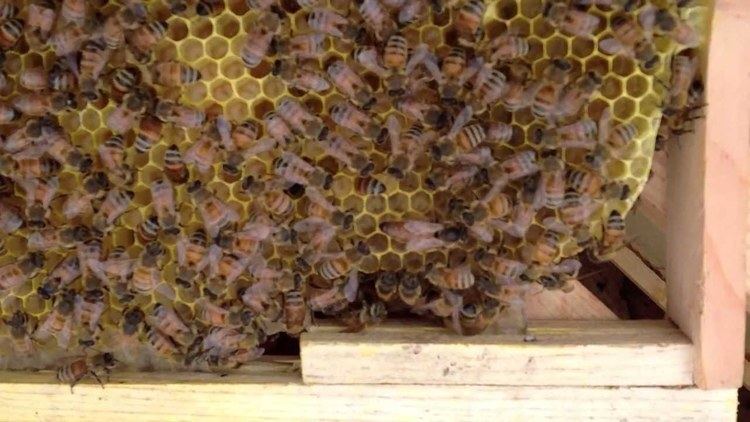Superfamily Apoidea Scientific name Apis cerana japonica Rank Subspecies | Suborder Apocrita Higher classification Apis cerana | |
 | ||
Similar Honey bee, Bee, Apis cerana, Insect, Japanese giant hornet | ||
Rare apis cerana japonica varroa mite resistant japanese honey bees with it s queen
Apis cerana japonica is a subspecies of the Eastern honey bee native to Japan. It is commonly known as the Japanese honey bee (ニホンミツバチ, Nihon mitsubachi). This subspecies was determined, through an analysis of mitochondrial DNA, to have originally come from the Korean peninsula. They have been observed moving into urban areas in the absence of natural predators.
Contents
- Rare apis cerana japonica varroa mite resistant japanese honey bees with it s queen
- Native honey bees
- References
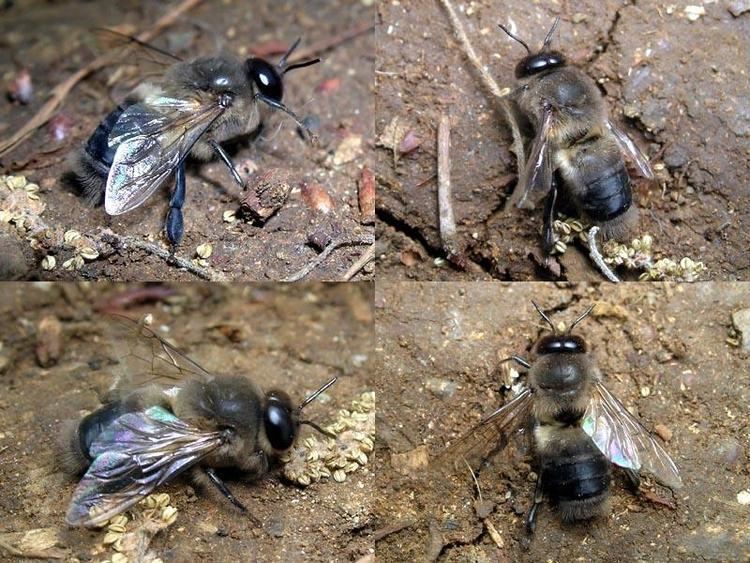
A.c. japonica is very resistant to the mite Varroa jacobsoni, which is commonly found among A. cerana.
3-Hydroxyoctanoic acid is a signalling chemical emitted by the orchid Cymbidium floribundum and recognized by Japanese honeybees.
Native honey bees
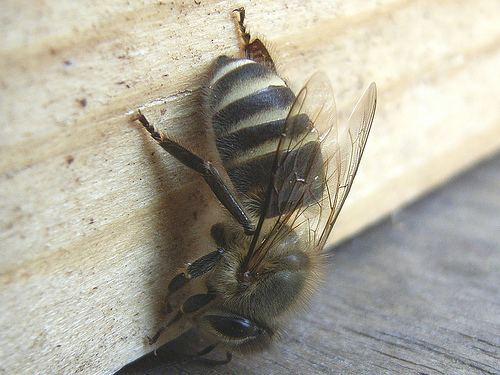
Beekeepers in Japan attempted to introduce European honey bees (Apis mellifera) for the sake of their high productivity. However, European honey bees have no innate defense against Japanese giant hornets, which can rapidly destroy their colonies.

Although a handful of Asian giant hornets can easily defeat the uncoordinated defenses of a honey bee colony, the Japanese honey bee (Apis cerana japonica) has an effective strategy.
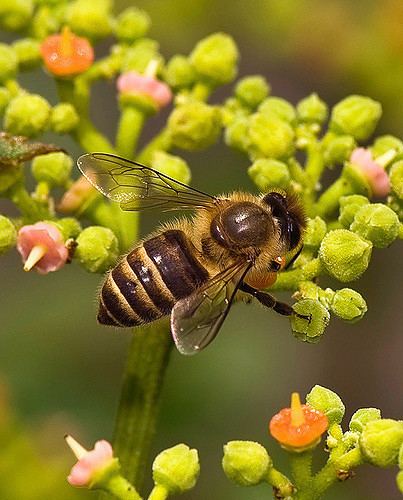
As a hornet enters the hive, a mob of hundreds of honey bees surrounds it in a ball, completely covering it and preventing it from reacting effectively. The bees violently vibrate their flight muscles in much the same way as they do to heat the hive in cold conditions. This raises the temperature in the ball to the critical temperature of 46 °C (115 °F). In addition, the exertions of the honey bees raise the level of carbon dioxide (CO2) in the ball. At that concentration of CO2, the honey bees can tolerate up to 50 °C (122 °F), but the hornet cannot survive the combination of a temperature of 46 °C (115 °F) and high carbon dioxide level. Some bees do die along with the intruder, much as happens when they attack other intruders with their stings, but by killing the hornet scout they prevent it from summoning reinforcements that would wipe out the entire colony.
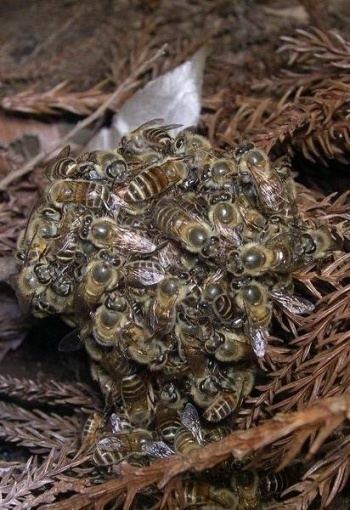
Although it is a commonly accepted theory that the Japanese giant hornet may be allowed to enter the Japanese honey bee hive, recent studies suggest that the Japanese honey bee and large hornets actually have a predator-prey “I see you” (ISY) relationship. The ISY relationship is supported by the observation that Japanese honeybee wingbeats become louder and increase in intensity as a bee-hawking wasp (such as Vespa velutina, Vespa simillima xanthoptera, or Vespa mandarinia) moves closer to the entrance of the hive and that in most cases the hornet may retreat when it hears the sound. If the hornet moves closer to the hive the Japanese honey bees move their wings faster to intensify the warning to the wasp. If the wasp enters the nest the bees will increase their wing movement, form a ball, and raise their body temperature.
